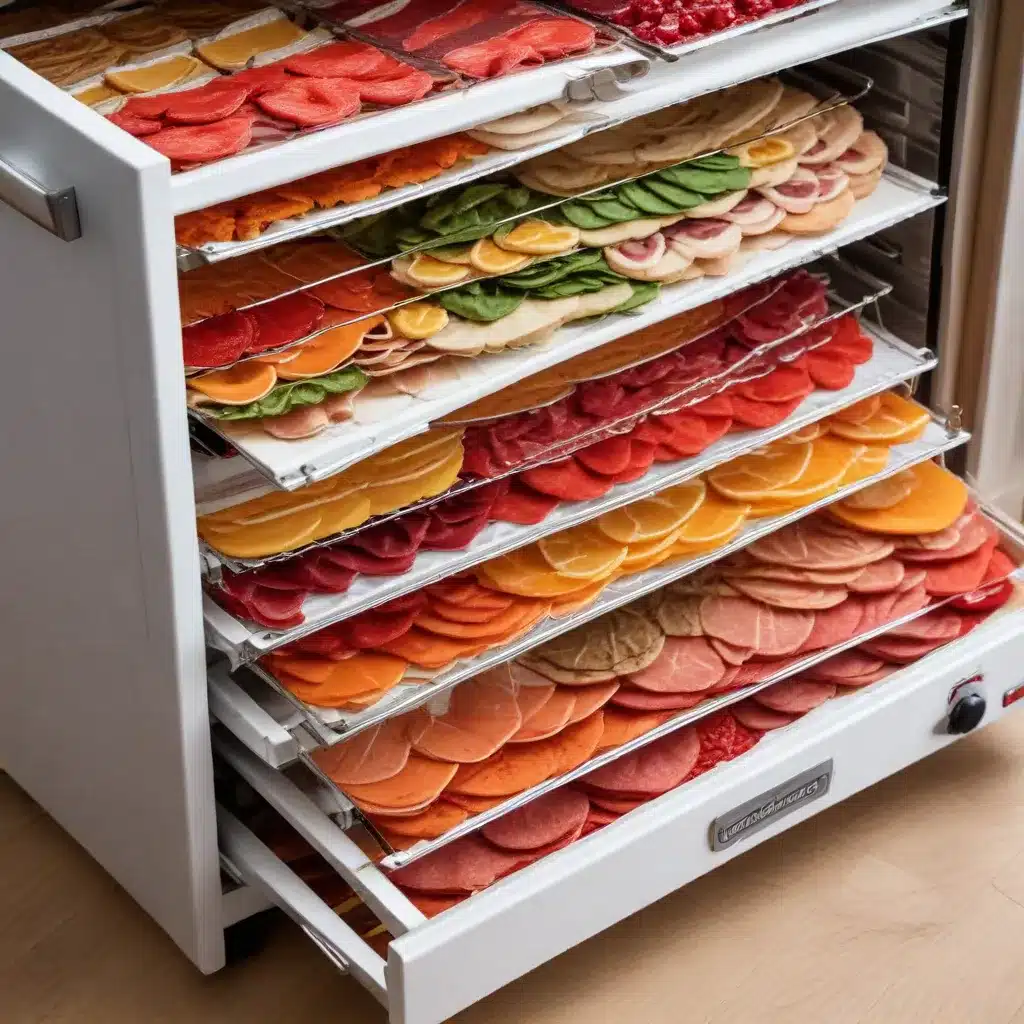
Proper Preparation and Initial Use
Before using your food dehydrator for the first time, it’s essential to take the necessary steps to ensure its longevity and optimal performance. Start by thoroughly washing the stackable trays with warm, soapy water. Rinse them completely and allow them to dry fully before using the dehydrator. This initial cleaning helps remove any residue from the manufacturing process, setting the stage for a clean and efficient drying experience.
During the very first use, you may notice a slight odor or a small amount of smoke emanating from the dehydrator. This is a normal and expected occurrence, resulting from a chemical reaction within the heating element. The odor will quickly dissipate, and there is no cause for concern. Simply ensure the area is well-ventilated, and the initial smoke will subside.
Cleaning and Maintenance After Each Use
Proper cleaning and maintenance are crucial for extending the lifespan of your food dehydrator. After each use, follow these steps to keep your appliance in top condition:
-
Allow Cooling: Before cleaning, unplug the dehydrator and allow it to cool completely. Handling a hot dehydrator can pose a safety risk and may damage the components.
-
Wipe the Motor Base: Use a soft, damp cloth to wipe down the motor base of the dehydrator. Avoid submerging the body, motor base, plug, or cord in water or any other liquid, as this can damage the electrical components.
-
Clean the Trays: Remove the stackable trays and wash them with warm, soapy water. A non-abrasive sponge or cloth can be used to gently scrub away any food residue. Rinse the trays thoroughly and make sure they are completely dry before reassembling the dehydrator.
-
Dry Thoroughly: After cleaning, ensure all parts are dried completely before storing the dehydrator. Moisture can lead to the growth of mold or mildew, compromising the appliance’s performance and safety.
-
Proper Storage: Store the food dehydrator in a cool, dry place, away from the reach of children. Avoid stacking heavy objects on top of the dehydrator, as this can potentially cause damage.
By following these cleaning and maintenance steps after each use, you’ll keep your food dehydrator in top condition, ensuring its longevity and continued efficient operation.
Tray Rotation and Proper Loading
Achieving even and consistent drying results in your food dehydrator requires proper tray rotation and loading techniques. Here’s what you need to know:
Tray Rotation:
During the drying process, rotate the trays to ensure even distribution of heat and airflow. The bottom trays are exposed to the hottest and driest air, which can cause the food on those trays to dry more rapidly. By moving the bottom trays up and the top trays down, you’ll achieve a more uniform drying result.
Proper Tray Loading:
Avoid overloading the dehydrator trays, as this can impede proper air circulation and affect the drying process. The food should be spread out evenly, ensuring each piece has adequate space for optimal airflow. As a general guideline, do not exceed half the surface area of the trays and keep the food pieces no thicker than a quarter inch.
If you have smaller food items that may fall through the tray openings, you can place a sheet of clean cheesecloth or parchment paper on the trays to prevent any loss.
By mastering tray rotation and proper loading techniques, you’ll unlock the full potential of your food dehydrator, ensuring consistent and efficient drying results.
Troubleshooting Common Issues
Even with proper maintenance and care, you may occasionally encounter some challenges with your food dehydrator. Let’s address a few common issues and how to resolve them:
Uneven Drying:
If you notice that some foods are drying faster than others, it’s likely due to the placement and rotation of the trays. Remember to rotate the trays, moving the bottom ones up and the top ones down, to ensure even heat distribution and airflow.
Excessive Moisture Buildup:
If you find that your dried foods still have a high moisture content, there are a few potential culprits. First, check that you’re not overloading the trays, as this can impede proper air circulation. Additionally, ensure the dehydrator is placed in a well-ventilated area, as high humidity can slow the drying process.
Sticking or Adhesion:
Sometimes, the food items may stick to the dehydrator trays, making removal difficult. To prevent this, lightly coat the trays with a food-safe oil or non-stick cooking spray before loading the food. This simple step can significantly improve the release of the dried items.
Discoloration or Hardening:
If your dried foods are discoloring or becoming too hard and brittle, it’s likely due to over-drying. Make a note of the recommended drying times for the specific foods you’re working with and adjust accordingly. Regularly check the progress and remove the items when they reach the desired texture.
By addressing these common issues, you’ll be able to maintain the optimal performance of your food dehydrator and consistently produce high-quality, long-lasting dried foods.
Extending the Lifespan Through Proper Care
Investing in a reliable food dehydrator is a significant step in your culinary journey, and with proper care and maintenance, you can extend its lifespan for years to come. By following the manufacturer’s instructions, embracing the cleaning and storage recommendations, and addressing any troubleshooting needs, you’ll ensure your dehydrator remains a trustworthy and efficient kitchen companion.
Remember, the key to a long-lasting food dehydrator lies in your commitment to regular maintenance, thoughtful usage, and a proactive approach to addressing any issues that may arise. With these strategies in place, you’ll be able to enjoy the benefits of your dehydrator for many years, adding delicious and nutritious dried foods to your culinary repertoire.
For more tips and insights on kitchen appliance care and maintenance, be sure to visit KitchenWarrior.co.uk. Our comprehensive guides and expert advice can help you make the most of your culinary tools and create delicious, healthy meals with confidence.


